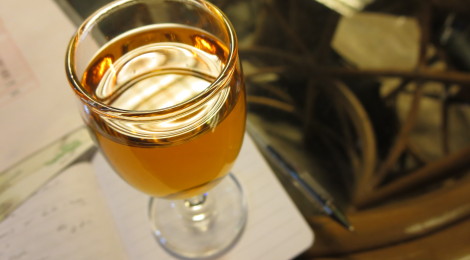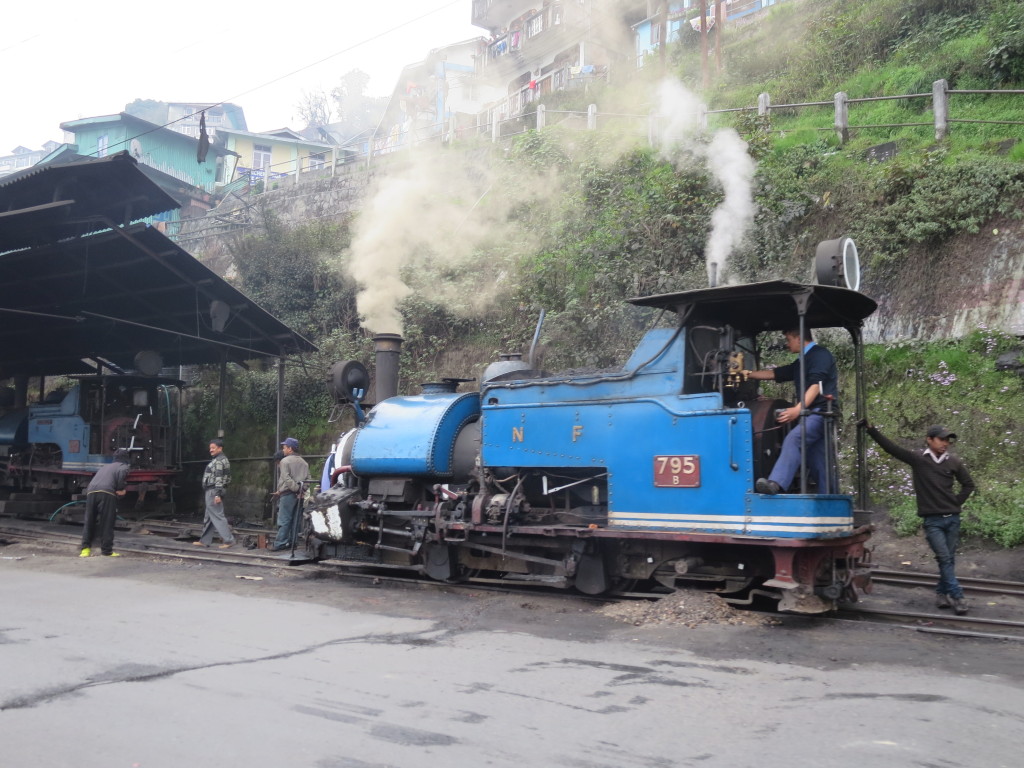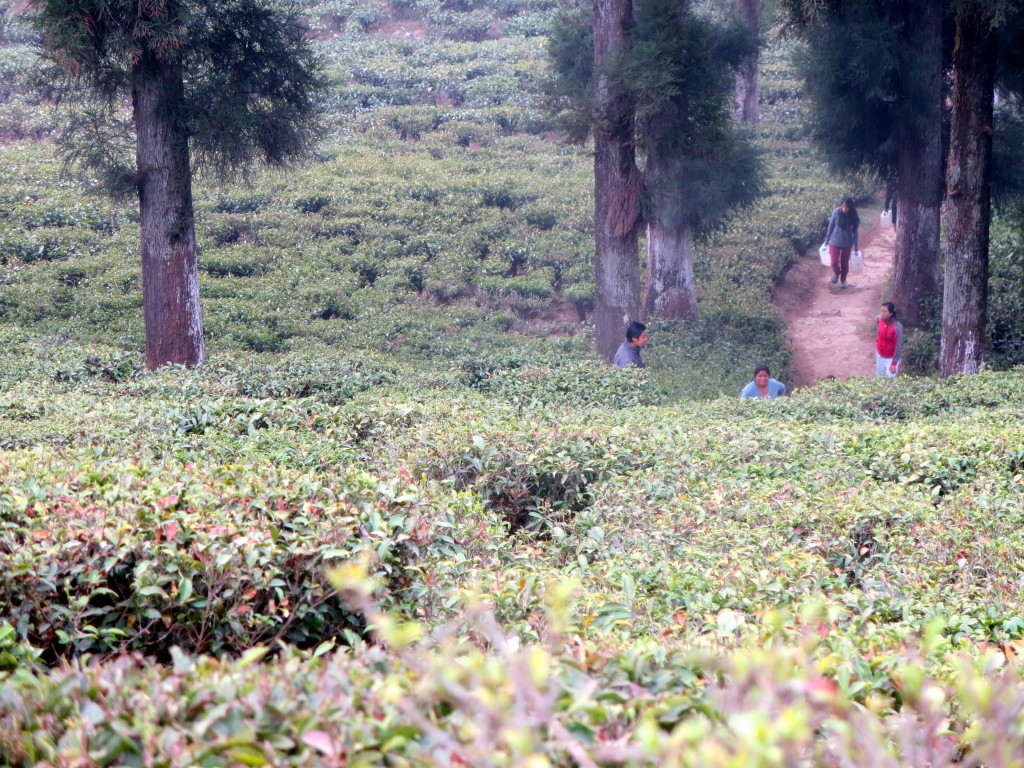
Eight Cups of Tea
Aboard the Darjeeling Himalayan Express, scenes of mountain life pass by the open windows at an antique pace. Produce sellers line the tracks with baskets of greens, onions, garlic and potatoes set out on blankets. Boys and men huddle together shoulder to shoulder in front of electronics shops to watch India play Australia in the Cricket World Cup semi-finals. Dogs howl in mournful response to the steam whistle as the train puffs and chugs its way to upward the “Queen of the Hill Stations.”
Once just a scattering of Himalayan mountain villages, Darjeeling’s stature heightened during the mid 19th century when the colonizing British, after annexing the area and establishing a hill station, discovered the region was especially suited for tea production. The Darjeeling Himalayan Railway opened in 1881 and the cool climate town became the summer capital of British India.
Today the train still runs, remnants of colonial architecture remain intact and the plantations continue to produce tea to fussy 19th century British standards. Touring the Happy Valley Tea Estate we learn that coal fires, as specified in their original charter, are still used to air dry the tea leaves.
Our education continues at the Nathmulls tasting room where we spend a cool, rainy afternoon sipping eight different teas out of delicate stemware, including three black, two green, one white, one yellow and one oolong (our hands-down favorite). We are presented with the opened tea leaves to smell as each fresh-brewed cup is brought out to us in proper tasting order. Reader alert: I know nothing about tea. My playful, amateurish tasting notes below are not to be taken seriously by any hard-core, tea-drinking aficionados out there (yes, I’m talking to you, Joel Shapiro). It is a giddy experience to sip tea with one’s head in the Himalayan clouds, and there is an undeniable whimsy to this place, where grown men’s eyes still glint with dreams of being engineers, and where blue toy train cars still ride the rails.
Nathmulls Darjeeling Tea Tasing Notes
“Silver Bullet” Darjeeling white tea
Garden: Pussimbing
Second flush
Notes: Pale and ethereal, with a delicate coolness that reminded me of Asian pears and bok choy. Hint of honeysuckle?
“Emerald Green” Darjeeling green tea
Garden: Ayra
Second flush
Notes: The color of champagne when sipped outdoors on a picnic. Fruity nose and fresh green-sweet flavor, like green papaya or spring pea shoots. Not a hint of bitterness.
“Green Blossom”
Garden: Rohini
Second flush
Notes: A clean, kelp-like, ocean breeze sort of nose. Yellow-green color. Tastes “healthy.” Counteract this by pairing it with Mongolian beef and/or General Tso’s chicken.
Darjeeling Oolong tea
Garden: Namring Upper
Notes: Delightful! Almonds? Yes, almonds. And peaches when they are so ripe the flavor darkens and the flesh blushes, and something tarter also like Italian oranges. Stunning amber color, light and long-lasting natural sweetness. Drink over deep philosophical discussion with a white rabbit. Curiouser and curiouser.
Yellow Darjeeling tea
Second Flush
Garden: Goomtee
Notes: Pale buttercup color. Light and refreshing, yet mysteriously savory. Boiled yellow potatoes with lemon thyme? This one has a spicy, peppery finish that sneaks up on you.
Darjeeling black tea
Garden: Pussimbing
Second flush
Notes: Woodsy, like taking a shady walk under a thick canopy of cedars. Underlying berry notes. Visually beautiful to swirl around in your cup. Lingering tannins and flavor. Serve to discerning bears.
“Muscal” Darjeeling black tea
Garden: Arya
Second Flush
Notes: Lovely! Rose and mango notes with lots of natural sweetness. Reminiscent of rooibos tea from South Africa, but with greater subtlety and complexity. Pair with summer laziness.
“Red Thunder” Darjeeling black tea
Garden: Gopaldhara
Autumn
Notes: Round, pretty and bittersweet, like apricots dipped in dark chocolate. Jewel-toned color of caramelized oranges.
The next morning the skies clear and we get our first glimpse of the incomparable Himalayas. One more week in India before moving onward to Nepal.
Reluctantly heading back down toward sea level,
Alison




Recent Comments